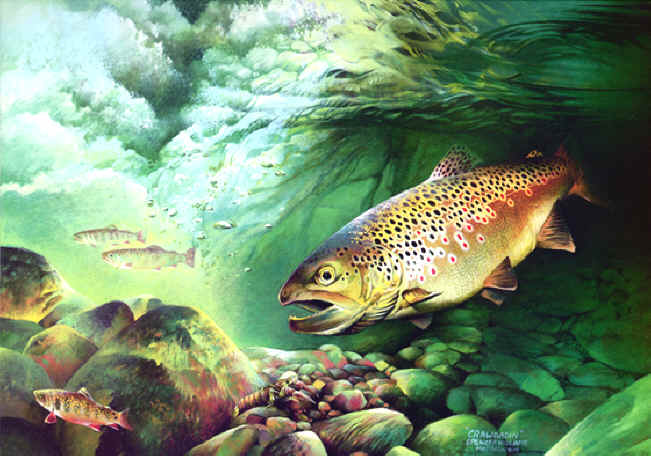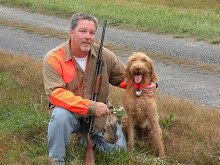
This week I was slapped in the face with the realization that my perception that whirling disease in trout is strictly a western affliction was wrong. Very wrong. And I also now feel selfish for not previously caring about it because I thought it didn't affect my beloved Maryland fisheries. Better late than never, I hope, as I care now, thanks to
this article from the Baltimore Sun.
Maryland's DNR discovered 80,000 infected trout in two hatcheries in Western Maryland (the
Bear Creek hatchery is pictured above). Short term the impact of this is certainly felt. There will be 20 percent fewer stocked rainbow and brown trout in Maryland streams and lakes this season. But long term really gets scary.
Whirling Disease can decimate young trout populations. The
Whirling Disease Foundation gives a detailed description of the parasite culprit and its effects, part of which reads:
"Myxobolus cerebralis is a metazoan parasite that penetrates the head and spinal cartilage of fingerling trout where it multiplies very rapidly, putting pressure on the organ of equilibrium. This causes the fish to swim erratically (whirl), and have difficulty feeding and avoiding predators. In severe infections, the disease can cause high rates of mortality in young-of-the-year fish. Those that survive until the cartilage hardens to bone can live a normal life span, but are marred by skeletal deformities."

It gets worse. When an infected fish dies, millions of the parasite spores get released into the water. The spores can withstand freezing and can survive in a stream for decades. Some good news is that the spores themselves don't infect the fish, but they need a host, the Tubifex tubifex worm. I say that's good news because A) although common, not all waters contain this worm, and B) it seems like an additional opportunity to stop the spread. But I'm no scientist, so I don't know.
Theaux, at my favorite fly shop on my favorite water, the Gunpowder, talked to me at length about the problem. He's very knowledgeable and said to check the
Backwater Angler site for some upcoming info about this outbreak. In addition, he tells me that a fish pathologist from Maryland's DNR might be giving an informational talk about whirling disease, the prognosis for Maryland waterways and what anglers can do to raise awareness and prevent the spread of parasites harmful to fish.

I'll post anything I find out about all this. Meanwhile, for more information check out Montana State's
Whirling Disease Initiative web site here.
 This Week's Challenge: Convince my wife that 'Black Snake Moan,' a movie I know little about other than Christina Ricci seems to run around in her panties the entire time, is a movie that must be seen. That it must be seen because it is a unique and powerful film, because the music is great and the reviews better. I must convince her of this and I must do it - and I know this from experience - without using the words "Christina Ricci" or "panties."
This Week's Challenge: Convince my wife that 'Black Snake Moan,' a movie I know little about other than Christina Ricci seems to run around in her panties the entire time, is a movie that must be seen. That it must be seen because it is a unique and powerful film, because the music is great and the reviews better. I must convince her of this and I must do it - and I know this from experience - without using the words "Christina Ricci" or "panties."


























